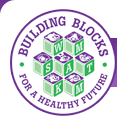 |
|
 |

Working Together
You can work together with young children to help others in the family, neighborhood, and community in many small ways that will benefit the child, the family, and the community.
Volunteering in the Family
- Help your child choose an activity. Ask your child to tell you ways he could help someone in your home. Older children can help younger siblings (e.g., to button a shirt, tie shoes, peel a banana). A younger child can "help" a pet find its toy.
- Pass it on. Tell your child how someone helped Mom, Dad, or her older brother or sister do something and now that person is "passing it on" by doing something for someone else in the family. Then, talk about ways someone in the family helped the child who is new to volunteering and how he can "pass it on" to someone else.
- Acknowledgement. Around the dinner table or in family meetings, make sure that all family members are acknowledged and appreciated for their family volunteer efforts.
Volunteering in the Neighborhood
- Treat your neighbors as yourselves. Help young children feel a part of, and a responsibility to, a neighborhood. Brainstorm with family members about what they can do for your neighbors. Some suggestions:
- Help the elderly with grocery bags.
- Walk a sick neighbor’s dog.
- Help pick up trash around the outside of the home.
- Pick wildflowers and/or make cards for someone who is unable to leave his home (a shut-in).
- Neighborhood Day. If you are part of a neighborhood organization, suggest a weekend day to have a neighborhood cleanup or get-together where all ages can participate. This will help your child see the value in a neighborhood working together and take pride in her part of the effort.
Volunteering in the Community
- Helping the helper. Modeling volunteering is the surest way to get your child involved. If you or someone else in your family participates in community volunteer programs, let your child take part in what that person does. For example, if the older person helps an organization with mailings, 4 to 6 year olds can fold letters, stuff and stamp envelopes, stack letters, or place them in a container for mailing.
- Cheering up shut-ins. Nursing home residents appreciate visits and performances, especially during holiday time. As a family, join with others to visit with and/or perform for shut-ins.
Acknowledging Volunteering Efforts
Whatever activities your family chooses, remember to acknowledge everyone’s participation and help reinforce the importance of community service and volunteering.
- Verbal appreciation. After a volunteering activity, set up a time to get the volunteers together. Say something special about each volunteer’s efforts.
- Badges or certificates. Create "I Helped" badges or certificates to honor the volunteers.
|
 |


 About Us
About Us  Links
Links  Get E-mail Updates
Get E-mail Updates  Awards
Awards
